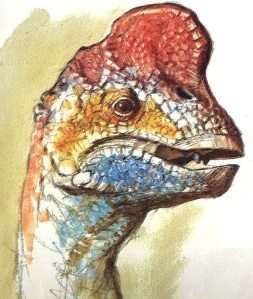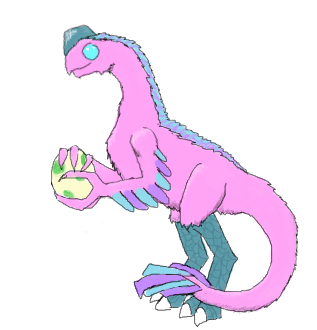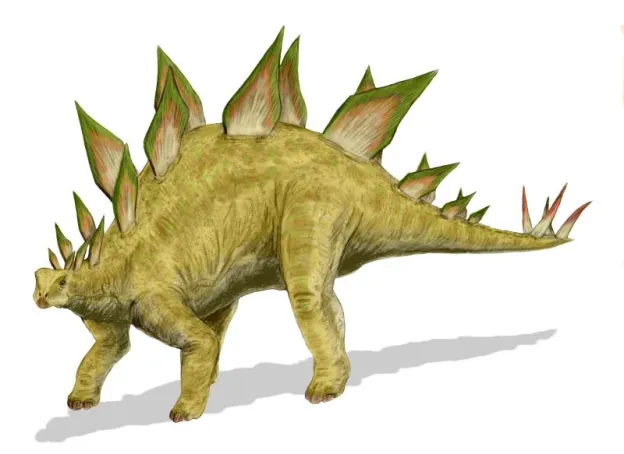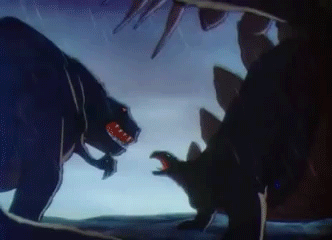Oviraptor: Therapoda Dinosaur, Late Cretaceous
The hubris of science can be ironic at times.
In 1924, a partial skeleton, known as AMNH (American Museum of Natural History) 6517 was found in the Mongolia desert next to an egg nest (AMNH 6508). Discovered by Roy Chapman Andrews and later named by Harry Fairfield Osborn, AMNH 6517 became known as Oviraptor philoceratops. Its name meaning “egg thief” and “lover of ceratopsians,” Oviraptor immediately became a hit and cemented itself in the pages of children’s books as the dinosaur that ate embryonic babies.
However, with such an accusatory name, no one knew what were inside the eggs. Everyone assumed they belonged to Protoceratops due to their fossil abundance nearby.
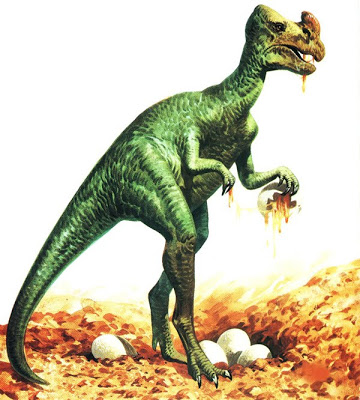
Oviraptor’s incomplete holotype also made it hard to determine what exactly it looked like. The result gave them some hooooooorible paleoart.
Barsbold (1977) was among the first to question this hypothesis by analyzing the dinosaur’s skull and concluded that it had a powerful bite. Powerful enough that it could eat hard shell organisms such as mollusks. Because of which a strict egg-only diet would make the strong jaws pointless. Maybe it ate eggs but it probably ate a lot of other things as well.
Norell et al. (1994) finally threw credible doubt onto Osborn’s original hypothesis when they analyzed an Oviraptoridae embryo (IGM 100/971) still trapped in its shell. IGM 100/971 looked so similar to AMNH 6508 that Norell et al. declared the latter specimen to be an Oviraptor nest. The skeleton that was found with the nest was most likely a brooding adult and not an egg-stealing thief.
Off the top of my head, I can’t think of any other dinosaurian hypothesis that had made such a 180. Here we have a dinosaur that was viewed with respite and now is looked upon with happiness. To be fair, Oviraptor could have still eaten eggs as its diet but that’s not the point. The point is that our perception of this dinosaur has changed from a baby-killing bandit to an offspring-concerned parent. That is hilarious.
Oviraptor can also be found in the Flaming Cliffs of the Gobi Desert along with a host of other animals. There are the small lizards and mammals and of course other dinosaurs. Most famous of which would be Velociraptor and its rival Protoceratops, along with the weird Therizinosaurus and the ferocious Tarbosaurus. The rock record also reveals, interestingly enough, that the climate of the time was probably similar to the modern day Gobi Desert. A braided, teaming with life, river dominated the otherwise dry, sandy environment (Fastovsky et al. 1997). Some dinosaurs were even uncovered in a desiccated position with their head pulled back and their spine extremely arched. Some were just completely buried by a sandstorm such as the Oviraptor specimen discovered by Andrews.
Oviraptor has not shown up much in pop culture. I know of two occasions; one in the documentary Dinosaur Planet and the second in the first Dinotopia book. In the book, Oviraptor was instead called Ovinutrix (“egg wet nurse”) and they took care of dinosaur eggs in Romano’s Hatchery. The twist? The book came out in 1992. Two years before Norell et al. took down the egg eating hypothesis. What was supposed to be taken as a humorous joke instead came out as a concept that was not scientifically outdated. What’s more, James Gurney’s, the author of Dinotopia, name change righted a wrong that should have never befallen the dinosaur in the first place.
OVALOOTER
Type: Fairy/Ghost
Stats: HP: 80, Attack: 80, Defense: 70, Special Attack: 80, Special Defense: 60, Speed: 90
Ability: Pick Up, Frisk
Moves Learned Upon Leveling Up:
Start-Covet
Start-Tail Whip
6-Confusion
9-Baby Doll Eyes
13-Sand Tomb
17-Charm
22-Bite
27-Fling
31-Light Screen
35-Soft Boiled
39-Bestow
43-Disarming Voice
47–Play Rough
52-Earthquake
Learnable TMs and HMs: Hone Claws, Dragon Claw, Psyshock, Calm Mind, Roar, Toxic, Hidden Power, Sunny Day, Light Screen, Safeguard, Frustration, Solar Beam, Smack Down, Earthquake, Return, Dig, Psychic, Double Team, Reflect, Sandstorm, Rock Tomb, Aerial Ace, Façade, Rest, Attract, Thief, Round, Echoed Voice, Steal Wing, Fling, Psych Up, Dragon Tail, Sleep Talk, Substitute, Confide
Egg Group: Field
Held Items: Oval Stone: 50%
Pokedex Description Version One: It loves to collect egg-shaped objects. It’s not unusual to find one with eggs from other species.
Pokedex Description Version Two: It raises the babies of other pokemon it has found. Prototops are the most common species they take care of.
Evolution: None known at this time
Basic Background: While driving with my gf two months ago, I said aloud, “You know, all my Ancient Fakemon came out before Generation VI. I have no Fairy Type fakemon. I should come up with one.” And it was right there and then that Oviraptor sprang into my head. Of course! Many modern paleoart interpret Oviraptoridae species with elaborate feathers. If dinosaurian pokemon had fairies it would be the ones with elaborate feathers.
From there, she and I played around with it until we had what we wanted. Unlike the previous two entries where I had them totally figured out and she just did the art, for Ovalooter, we came up with the ideas, design, naming, and so forth on an equal basis.
It was certainly fun coming up with a fakemon from scratch as it had been awhile for me. This one I kind of let loose and enjoyed myself. Ovalooter is basically a combination of Chansey and Linoone in that it just steals eggs and such and raises them as their own. I love it. Being a desert pokemon, Ovalooter was almost required to have that Ground Secondary Typing. It is similar to the Nidos, Krookodile, and Flygon as Ovalooter is more of a field based pokemon and less a digging pokemon.
Barsbold, R., 1977. Kinetism and pecual structure of the jaw apparatus of oviraptors (Therapoda, Saurishia). Sovmestnaya Sovetsko-Mongol’skaya Paleontologicheskaya Ekspeditsiya Trudy, vol 163, p. 34-47.
Fastovsky, D.E., Badamgarav D., Ishimoto, H., Watabe, M., Weishampel, D.B., 1997. The Paleoenvironments of Turgrikin-Shireh (Gobi Desert, Mongolia) and Aspects of the Taphonomy and Paleoecology of Protoceratops (Dinosauria: Ornithischichia). Palaios, vol 12, p. 59-70.
Norell, M.A., Clark, J.M., Demberelyin, D., Rhinchen, B., Chiappe, L.M., Davidson, A.R., McKenna, M.C., Altangerel, P., Novacek, M.J., 1994.. A Theropod Dinosaur Embryo and the Affnities of the Flaming Cliffs Dinosaur Eggs. Science, Vol. 266, No. 5186, p. 779-782

